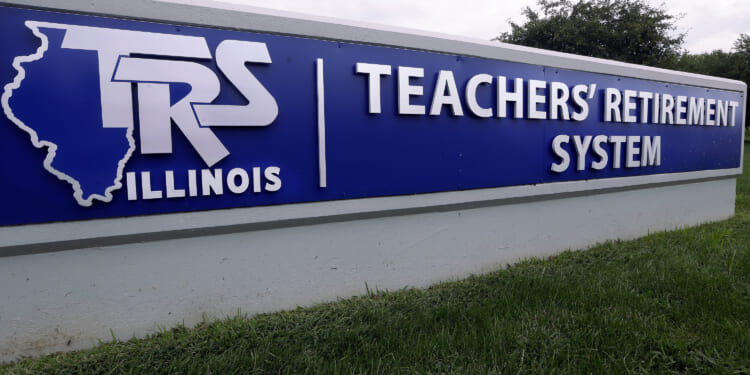Illinois’ pension crisis won’t be solved without constitutional reform. Waiting for Tier 1 members to completely leave the system would take decades and cost taxpayers billions in unsustainable benefits.
If Tier 1 pensions are the problem, why not just wait for all the Tier 1 members to leave the system? That strategy would take far longer than most people realize, and the ability for Illinois’ pension systems to survive ballooning Tier 1 benefits for that long is unlikely.
The Teachers’ Retirement System, the largest of Illinois’ five pension systems, highlights the problem. Out of the 142,390 active TRS employees, about 64% are in Tier 1. Many of them are nowhere near retirement: more than 35,000 are under age 45.
Tier 2 only applied to workers hired after Jan. 1, 2011. Take, for example, a teacher hired in 2010 at age 22. That person is a Tier 1 member. They could remain in TRS until 2045, having worked for 35 years, or could delay their retirement even later to accrue more benefits.
When they do retire, they will collect a Tier 1 pension with a 3% compounding annual cost-of-living adjustment until they die. Given Illinois’ average life expectancy of 77, that could mean collecting benefits until 2065 – 20 years of Tier 1-level pension payments covered by Tier 2 workers and taxpayers.
Dozens of TRS retirees made over $300,000 a year in 2024 retirement benefits and the average state retiree made $93,558. The number of Tier 1 employees still actively accruing benefits means those numbers won’t be going down anytime soon.
The TRS actuarial valuation released earlier this year projected liabilities through 2046. By that year, the accrued liability for those currently active in Tier 1 is expected to nearly triple – growing from $52 billion today to $146 billion.
In comparison, Tier 2 liabilities will grow from $2 billion to $23 billion for current members, plus $16 billion in liabilities for new entrants. That totals $39 billion.
The nearly $100 billion growth Tier 1 liabilities will experience by 2046 far exceeds the $60 billion decrease from inactive members – those who are owed some benefits but not currently working or receiving payments – or current retirees as they leave the system.
Even as Tier 1 employees retire, the system’s costs won’t taper off quickly. In 2024, TRS paid out $8 billion in benefits and expenses; that number will double to $16 billion in 2046.
Of those payouts that year, $9.7 billion will be to Tier 1 members and retirees, compared to just $600 million to Tier 2 members and retirees. By then, currently retired and inactive members passing away will only decrease payouts by about $3 billion compared to this year.
In 2046, 1,881 Tier 1 employees will still be actively accruing benefits. Another 134,482 will be retired and collecting their compounding pensions or inactive members possibly eligible for refunds of their contributions.
Meanwhile, 167,871 Tier 2 employees – along with taxpayers – will be footing the bill. That imbalance may not be sustainable, especially if lawmakers bow to pressure and increase Tier 2 benefits to more closely match Tier 1 levels.
Illinois cannot simply wait this problem out. Rather than hoping Tier 1 benefits will naturally fade, Illinois needs constitutional pension reform to slow the growth of Tier 1 liabilities.
When Rhode Island faced a similar pension crisis at a combined funded ratio of 48.4%, they enacted a temporary cost-of-living adjustment holiday. This combined with other reforms slowed benefit growth and allowed the state to regain control.
Illinois, which currently boasts the nation’s worst pension crisis, could use a similar common-sense adjustment holiday for Tier 1 pensions.
New employees should also have the ability to opt into a defined contribution, or 401(k)-style plan. That would give them more control over their retirement savings and better flexibility in an increasingly mobile workforce.
Without these changes, waiting for Tier 1 members to leave the system will mean decades of ballooning costs, a larger burden on Illinois taxpayers and less money for Illinois classrooms.










